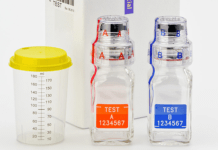There have been entirely too many doping positives coming out of Kenya and its legendary distance-running program, leading to suspensions of stars like 2008 Olympic 1,500 m gold medalist and three-time World Champion Asbel Kiprop.
So the World Anti-Doping Agency undertook to find out what was going on there and created, with the Athletics Integrity Unit of the track & field governing body, the International Assn. of Athletics Federations (IAAF), a “Kenya Project” beginning in December 2016.
This was not a police raid-style program of sending out agents to conduct more tests, but a new concept, using the Intelligence and Investigations Department of WADA, along with the AIU to understand why there were so many Kenyan positives and how to reduce them.
Their report, Doping in Kenya, was released last Friday. It’s a succinct, easy-to-follow brief of 12 pages that includes seven key findings:
∙ The doping practices of Kenyan athletes are unsophisticated, opportunistic, and uncoordinated.
∙ Doping in Kenya is drastically different from other doping structures discovered elsewhere in the world.
∙ Based on the substances detected, Kenyan athletes most commonly use Nandrolone and EPO.
∙ Athletes in Kenya are insufficiently educated on doping and/or willfully blind as to the consequences of doping.
∙ The role of local medical practitioners and quasi-medical personnel (e.g. chemists) is highly relevant to the accessibility of Prohibited Substances to athletes and their entourage.
∙ Some local medical practitioners and quasi-medical personnel are unaware and/or willfully blind to their role in facilitating the access of athletes and their entourage to Prohibited Substances.
∙ The benefits of the Substantial Assistance provisions of the Code are vastly underutilized by doping Kenyan athletes.
The report does an excellent job of answering the key questions that have to be asked about Kenya and doping:
1. Is there a coordinated doping program developed and maintained by a governmental or private-sector-organized group? Answer: No.
2. Is there a compulsory educational program that emphasizes the dangers of doping and the likelihood of being caught? Answer: No.
3. Is there easy access to performance-enhancing drugs? Answer: Yes.
With these findings, the actions to be taken are clearer and the problem can begin to be addressed.
The report noted that there were 138 Kenyan positives from 2004-18, 86% of whom were caught by in-competition testing. That’s pretty unusual compared to doping programs from East Germany or Russia, which were specifically created to mask positive in-competition tests and were usually only found in out-of-competition testing.
Of the 138 positives, 131 were from distance runners, with only seven from all other sports combined. The drugs of choice were steroids (especially Nandrolone), responsible for 67 of the positives and Erythropoietin (EPO), which accounted for 16 positives, including most of the higher-earning runners.
Multiple athletes tested positive after receiving medical treatments about which they kept no records or had no actual knowledge of how they were being treated. Two notable athletes, marathoners Rita Jeptoo (a two-time Boston winner) and 2016 Olympic champ Jemima Sumgong, tried to evade positive tests by having their medical records changed.
This report is a noteworthy advance for WADA in several ways. It advances the importance of the Intelligence & Investigations branch and brings it additional credibility. It is the first WADA staff report that focuses on a single country, showing that others could be the subject of the same scrutiny as a response to large numbers of positive tests. And the investigative process included the anti-doping agency of Kenya (ADAK) as part of the investigating team, lessening the adversarial aspects of the project. The August announcement of a new doping laboratory in Kenya was undoubtedly an outcome of this reporting effort. All to the good.
The ridiculous lack of educational programs or knowledge of today’s drug-testing procedures is not just an indictment against Kenyan sport, but every International Federation, National Olympic Committee and the International Olympic Committee. For now on, entry into an international championship must be conditioned on an athlete’s attendance at an anti-doping seminar held at that event. After the first person is disqualified, attendance will be perfect.
Rich Perelman
Editor

















